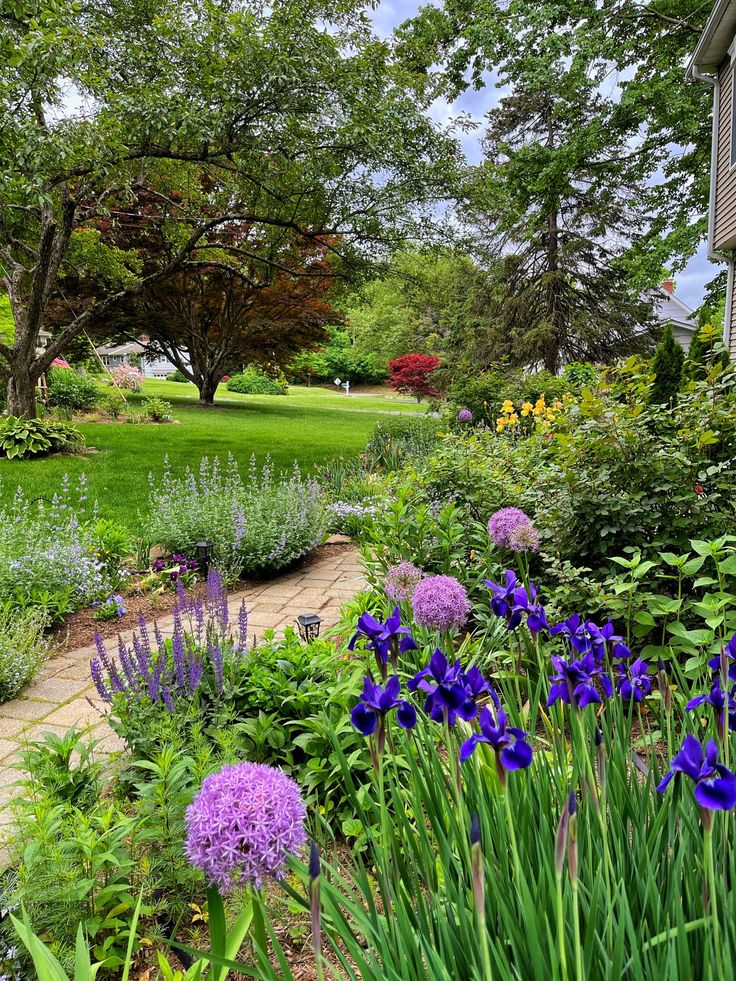Annuals Vs. Perennials: Which Flowers Are Right For Your Garden?

Table of Contents
Understanding Annual Flowers
What are Annuals?
Annual flowers complete their entire life cycle – from seed to flower to seed – within a single growing season. This means they germinate, grow, bloom, produce seeds, and then die all within one year. Because of this, annual plants need to be replanted every year to enjoy their vibrant blooms. They often provide a burst of intense color and a wide variety of flower shapes and sizes.
- Complete life cycle in one season: This rapid growth cycle makes them ideal for quickly filling space and adding color.
- Require yearly replanting: This is a key difference from perennials and a factor to consider in your garden planning.
- Vibrant and abundant blooms: Annuals are known for their profusion of flowers.
- Popular examples: Zinnias, petunias, marigolds, impatiens, cosmos, and sunflowers are just a few of the many annual flower options available.
Advantages of Annuals
- Extensive variety: Annuals offer an unparalleled diversity of colors, sizes, and flower forms, allowing for almost limitless creative possibilities in garden design.
- Fast-growing and quick to bloom: Enjoy vibrant color quickly; many annuals will bloom just weeks after planting.
- Easy to start from seed: Many annuals are easily grown from seed, making them a budget-friendly option for filling large areas.
- Gap fillers: Perfect for quickly filling empty spaces or adding pops of color throughout your garden beds.
Disadvantages of Annuals
- Yearly commitment: The need for yearly replanting requires more time and effort compared to perennials.
- Higher long-term cost: The ongoing expense of purchasing new plants each year can add up over time.
- Susceptibility to pests and diseases: Annuals can sometimes be more prone to pests and diseases than established perennials.
Understanding Perennial Flowers
What are Perennials?
Perennial flowers live for more than two years, returning year after year to grace your garden with their beauty. They establish a root system that allows them to survive winter and regrow in the spring, offering long-term value and less work for the gardener. Many perennials offer extended bloom times or even bloom in different seasons.
- Multi-year lifespan: Enjoy their beauty for years to come with minimal replanting.
- Return annually: Come back year after year with minimal effort, providing a consistent element in your garden design.
- Extended bloom periods: Some perennials boast flowers for weeks or even months.
- Popular examples: Lavender, coneflowers, daylilies, hostas, salvia, and many more offer diverse shapes, sizes, and colors.
Advantages of Perennials
- Cost-effective: The initial investment provides years of enjoyment, making them a budget-friendly choice in the long run.
- Low maintenance (after establishment): Once established, they require less frequent watering and fertilization compared to annuals.
- Attract pollinators: Many perennials attract beneficial insects like bees and butterflies, promoting a healthy garden ecosystem.
- Seasonal interest: Perennials often provide different visual appeal throughout the seasons, adding layers of texture and color.
Disadvantages of Perennials
- Slower establishment: Perennials take longer to establish themselves compared to fast-growing annuals.
- May require division: To prevent overcrowding and maintain vigor, you may need to divide your perennials every few years.
- Winter damage susceptibility: Depending on the species and your climate, some perennials may require winter protection.
Choosing Between Annuals and Perennials
Choosing between annuals and perennials is a matter of personal preference and practical considerations.
- Climate and growing zone: Research plants suitable for your specific climate and USDA hardiness zone.
- Available time for gardening: Annuals require more frequent attention, while perennials need less maintenance once established.
- Budget: Consider the initial investment and long-term costs associated with each plant type.
- Aesthetic preferences: Decide if you prefer the vibrant, ever-changing display of annuals or the established, consistent beauty of perennials, or a combination of both for the most satisfying garden design.
Conclusion
Choosing between annuals and perennials depends on your individual gardening preferences and circumstances. Annuals offer bright, quick blooms and flexibility, while perennials provide long-term beauty and cost savings. By understanding the advantages and disadvantages of each, you can make an informed decision that best suits your needs. Ready to design your dream garden? Consider the unique benefits of both annuals and perennials to create a stunning and thriving outdoor space. Start planning your annuals and perennials garden today!

Featured Posts
-
 Court Hears Aunts Testimony In Joshlin Child Sale Allegation
May 29, 2025
Court Hears Aunts Testimony In Joshlin Child Sale Allegation
May 29, 2025 -
 Antisemitism Allegations Rock Queensland Music Awards
May 29, 2025
Antisemitism Allegations Rock Queensland Music Awards
May 29, 2025 -
 Space X Starship Flight 9 Launch Preparations And Updates
May 29, 2025
Space X Starship Flight 9 Launch Preparations And Updates
May 29, 2025 -
 Westervelds Honest Assessment Of Mamardashvilis Season
May 29, 2025
Westervelds Honest Assessment Of Mamardashvilis Season
May 29, 2025 -
 A24s Latest Horror Unveiling The Connection To A Previous Blockbuster
May 29, 2025
A24s Latest Horror Unveiling The Connection To A Previous Blockbuster
May 29, 2025
